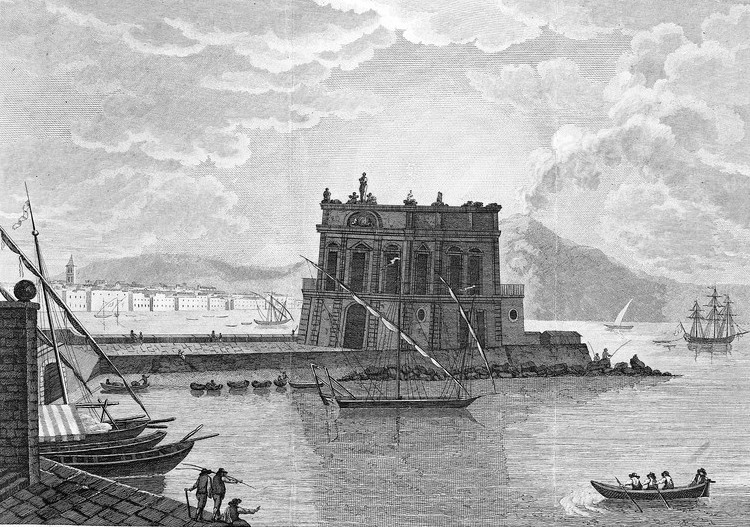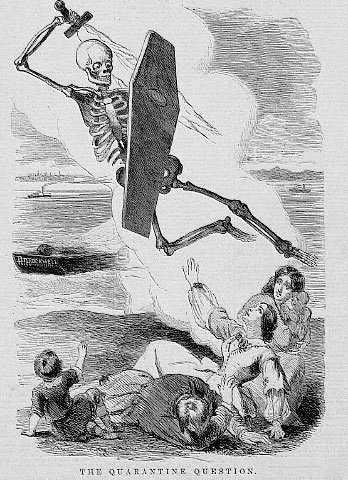History of Quarantine: Since ancient times, efforts have been made to keep patients with infectious diseases away from healthy individuals, and self-isolation is also mentioned in the Old Testament.
Since the spread of COVID-19 around the world, it is suggested that if you have come from abroad or have come in contact with someone who has been COVID-19, then stay in self-quarantine.
To understand the importance of self-quarantine in today’s time of epidemic, it would be interesting to know the history of the word ‘quarantine.’ The origin of this word is hidden in medieval Europe.
‘Quarantine’ derives from the Italian word ‘Quarantino,’ which means forty days. To protect coastal cities like Venice from the plague that spread across Europe in the 14th century, every ship arriving there from infected ports had to remain anchored in water for 40 days before touching the city’s land; that is, they would travel for 40 days. Gradually this practice came to be called Quarantine.
History of Quarantine
A new law in the year 1377

In 1374, Venice took out an order that unless the Special Health Council of Venice allowed ships and their passengers to enter the city, they would have to stay on nearby San Lazaro Island.
But as Anto Milosevich, Ph.D., co-author of ‘Lazaretto in Dubrovnik: The Beginning of the Quarantine Regulation in Europe’ writes, ‘this led to discrimination and other disturbances with ships and passengers from certain countries in Venice. ‘
On the other hand, the General Council of Ragusa (modern Dubrovnik) across the Adriatic Sea enacted a new law in 1377 to prevent the epidemic from spreading, according to which every ship and merchant convoy arriving in Ragusa was to remain in isolation for 30 days.
This law stated that every person from dangerous areas would have to spend 30 days in the nearest Sevat town or Markan Island to free themselves from infection before entering the central city.
Thus, as Milosevich states, ‘Dubrovnik first applied a method that was biased and justified but also proved highly sensible and successful. The whole world adopted it.
Two essential things – isolation and discipline

The book’s co-author Ana Besija-Konsua, MD-PhD, says, ‘Dubrovnik was the first port in the Mid-Sea to keep people, livestock and goods from healthy populations, both on the way from infected areas, through waterways and laneways, Whereas Venice prohibited all ships and trade which brought life to a standstill.
The Republic of Ragusa imposed severe penalties for violating this 30-day Quarantine law (referred to as Trentin in a document dated 27 July 1377 by Dubrovnik). Initially, the isolation period was only 30 days, but then it was reduced to 40 days.
Nobody knows the exact reason for doing this. Some believe the 30 days is inadequate because the disease’s incubation period is not well known, so some associate it with the 40-day fast (Lent season) before Easter.
Some believe the 40 days are based on critical Biblical events such as forty days of the Great Depression, forty days spent on Mount Sinai of Hazrat Moses, etc.
The Senate of Venice officially increased the quarantine period from 14 days to 40 days for ships entering its port in 1448.
History of Quarantine: Europe’s first temporary plague hospital

Baqija-Konsua writes in the Legretto of Dubrovnik, ‘The idea of Dubrovnik’s administration of quarantine came from their experience of keeping leprosy patients separate from others to prevent the spread of leprosy.’
Several diseases had caused havoc in Dubrovnik’s history, with leprosy and plague proving to be the biggest threat to public health.
History of Quarantine: According to historical facts, the concept of ‘Quarantine’ is due to Dubrovnik. The ‘Statue of Dubrovnik’ of 1272 mentions the placing of leprosy patients in isolation for the first time.
This statue is one of the oldest legal documents in Croatia. Baichaja-Konsua also states that ‘Lazarus‘ suffering from leprosy in the Bible, has been considered the patron saint of leprosy patients, and the residences for leprosy patients are named after he was called Lazaretto.
Quarantine centers across Europe became called Lazaretto after the Raguja administration created Europe’s first temporary plague hospital in Mljet.
History of Quarantine: Establishment of Quarantine Complex

After the 1377 Isolation Law of Raguja, the first Quarantine was applied to Sevatt, a small town southwest of Dubrovnik and the surrounding islands (Supetar, Markan, and Barbara).
Initially, the Quarantine was arranged in huts, tents, and sometimes in the open. The good thing with the houses was that the whole area could be disinfected by burning them efficiently.
In 1397, it was decided to establish a quarantine complex at the Benediction monastery on the island of Mljet.
The Lazaretto of Dance Beach was built in 1430, and later a more giant and modern Lazaretto was built on the island of Locram.
On 12 February 1590, Dubrovnik’s Senate ordered the creation of the last Lazaretto at Plos at the eastern entrance to the old city. Its construction was completed in 1647. In 1724, the Senate declared it an integral part of the city’s outer wall.
History of Quarantine: Tourist attraction

The use of the Lazaretto complexes as the quarantine center continued even after the fall of the Dubrovnik Republic. When it ceased to be used as a health center, we cannot say. Bachija-Konsuo states that, according to Dubrovnik’s national records, this must have happened around 1872.
She says, “This magnificent structure built with stones is a marvelous piece of architecture and a witness to Dubrovnik’s unique medical heritage.”
Today, these Quarantine complexes of Dubrovnik and Lazaretto are the center of tourist attractions, and nowadays, traditional folk dances like concerts and Lindos are organized here.
These premises witness how far the city had the foresight in fighting infectious diseases centuries ago.
Historical tour guide Ivan Vukovich Vuka, who grew up in the city of Dubrovnik, explains that he used to go to these campuses on summer nights to enjoy the cool breeze.
Lazaretto is 300 meters out from the walls of the old city. He says, ‘Any disease can spread very quickly inside the city walls; that’s why the Lazaretto campus is huge and open. The area is divided into ten multi-story buildings, which are very windy. ‘
History of Quarantine: Today, there are empty roads.

The Lazaretto complex has ten quarantine buildings, five courtyards, and two guardhouses. The buildings also have small terraces where quarantine travelers can take fresh air.
Vesna Milosevich, co-author of Lazaretto in Dubronvic, states, “They could walk the upper part of the campus but could not meet anyone who had completed the quarantine or who lived outside the Lazaretto campus.”
Today Dubrovnik city is under Quarantine all over the world due to COVID-19. Tourism has ceased to be the lifeline of the Croatian economy and a significant source of Dubronvic’s income.
Cruise ships are standing in the ocean, and in March 2020, a temporary ban was imposed on crossing the border in Croatia to prevent the virus from spreading.
‘All borders are closed – today in Croatia, you can’t even go from one city to another. Last year, American Airlines started flying on a new route, and after 28 years, any direct flight between the two countries began, but now this flight has been canceled for this whole year, i.e., 2020.
Other European international flights are also closed until June 2020. Vuka says, ‘Dubrovnik did not get so empty even during the war of the 90s. You can hear the voice of silence. ‘
Two ports connected

But the difference is that, unlike the medieval Quarantine Act of the city, people now have the facility of self-quarantine in their homes.
Just as Vuka states, ‘Croatians are accustomed to living in large communities with their parents, grandparents, nanny-Nani, so it is necessary to take a little care to prevent infection.’
But apart from this, the protocol of Quarantine has not changed much today.
The mantra that Dubrovnik adopted centuries ago is still valid, and the whole world should follow it – ‘Isolation and discipline are two essential things.’
Like Venice, Dubrovnik (formerly known as Raguja) has been popular with travelers worldwide.
Today both cities are UNESCO World Heritage Sites. Venice and Raguja were big trading ports in the Middle Ages whose history is linked.
From 1205 to 1385, Raguja accepted the suzerainty of Venice but, in most cases, maintained his independence.
When Dalmeshia (a coastal area Adriatic sea, most of which is now in Croatia) was sold to Venice, Dubronvic remained independent, still nominally subject to Venice.
Table of Contents







Add Comment